MusicRadar Verdict
The good stuff - the pedals and cymbal stands in general and the 9607 hi-hat in particular - is very good indeed and wouldn't look out of place on any of the world's stages. You might decide that the 8600 is a bit skinny for your tastes and the 9600 stuff too over-built, but that's nothing for Gibraltar to worry about - they've got the 5600 and 6600 series to fill those gaps. They've got you every which way…
Pros
- +
Typically high-performing stuff that does the brand proud – it’s as shipshape as it is shiny!
Cons
- -
A couple of minor details that are fairly subjective anyway.
MusicRadar's got your back

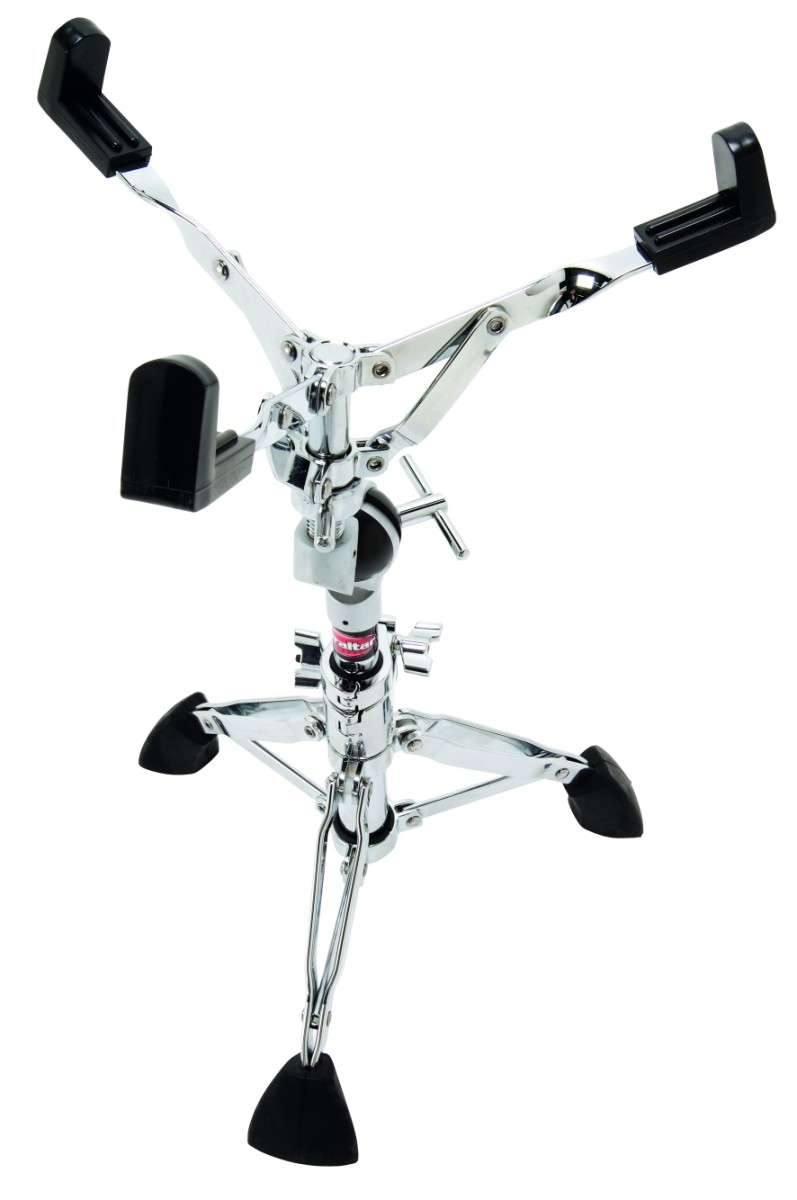
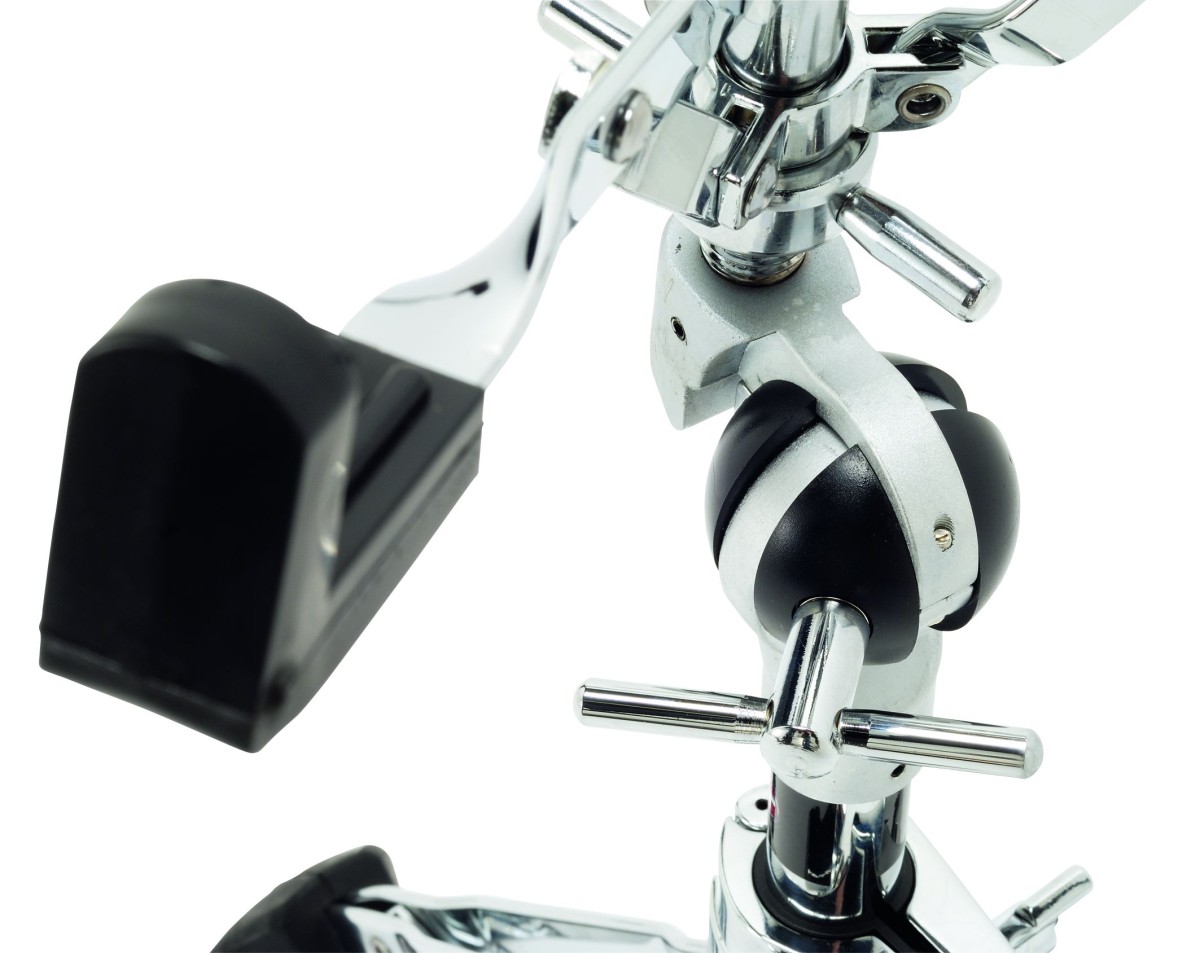
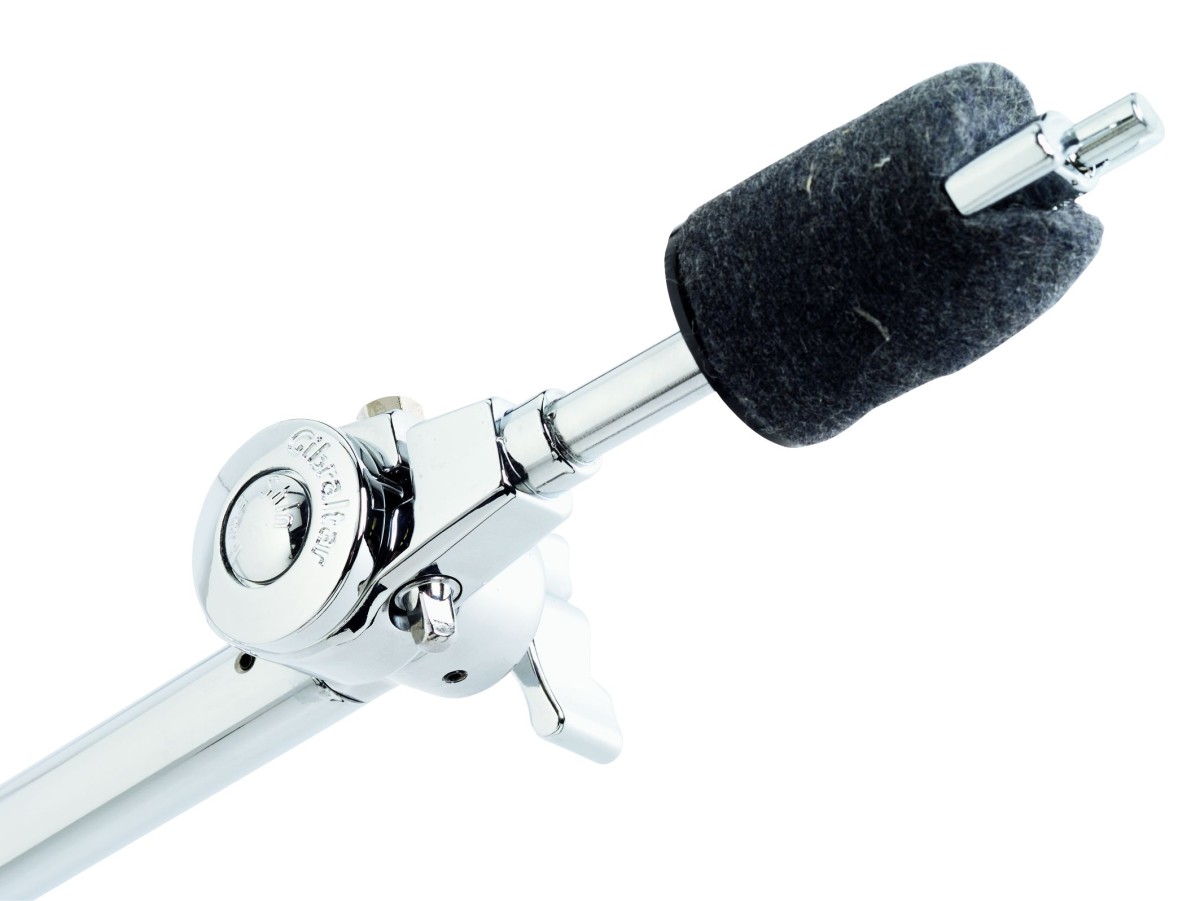
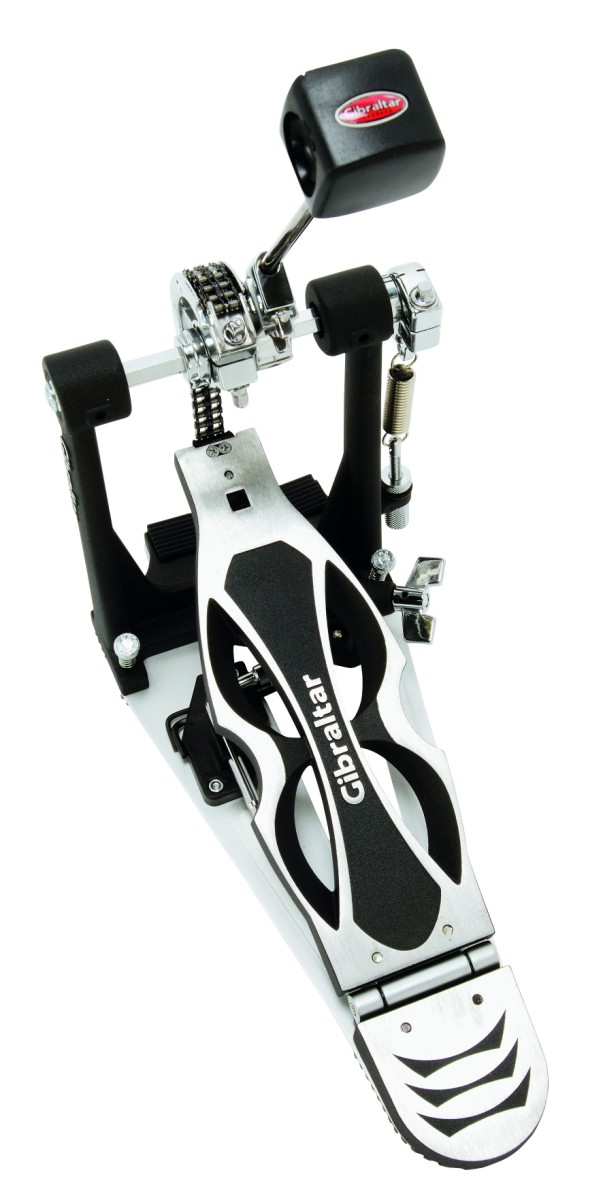
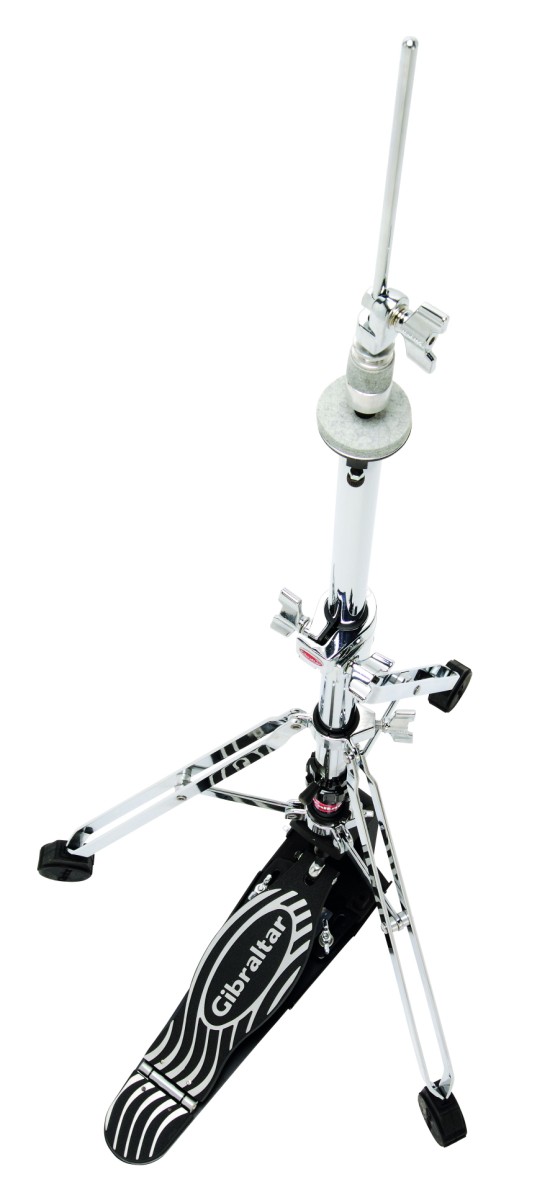
Gibraltar makes a lot of hardware. Loads, in fact. The first four pages of its current brochure contain details on no fewer than eight bass drum pedals across its Intruder, Avenger and Prowler series, for example.
And even ignoring its sprawling range of rack metalwork and the various bits and pieces of bolt-on hardware available therein, Gibraltar's standard stand line-up (y'know, the basic hi-hat, snare and cymbal stands etc) still covers more ground than most.
Which is why the company can convincingly lay claim to being the world's biggest dedicated drum hardware manufacturer by quite some margin, and why it is able to offer ranges that are as diverse as the 8600 and 9600, and that are aimed at entirely different target markets.
Poles apart
Numerically speaking, the two lines might appear to be closely related. But they are poles apart. The 8600s are single-braced stands and are of classically styled 'flat base' design, where the legs of each stand can be positioned, well, flat to the floor. On the other hand, the 9600s are humungous great behemoths with double-braced legs, massive tubing and all sorts of clever features.
There's not a lot of common ground between the two ranges, other than the usual obvious Gibraltar standards of construction, which are difficult to fault. Other than that, the 9600s are heavily-set bulldogs and the 8600s are skinny whippets. But are they both pedigrees?
Striking a balance
In the early stages of your drumming career it's easy to get caught up in the 'bigger is better' mindset as far as hardware is concerned.
Worries of arriving at gigs with spindly single-braced stands only to get laughed out of the venue by other drummers with multi-lok, ultra-beef metalwork can play heavily on a young drummer's mind.
However, as experience is gained it quickly becomes apparent that in fact the weight and space penalty often incurred by over sized stands outweighs their promises of stability and longevity. Sure, such gear is great if you play 300 shows a year, lay into your kit with the subtlety of a small bison and have a crew to ship all the gear around for you. But for the majority of us, decent, lighter weight stands are preferable both in terms of carry-ability and price.
The 8600 series certainly falls into this bracket as far as weight goes. Gibraltar has designed them to be low mass types, and the slender pipes of the 8609 and 8610 boom and straight cymbal stands (and indeed the whole line-up) helps on this front. But this is still a reasonably full-featured range and the cymbal stands both get gearless brake cymbal tilters for set-up flexibility and all stands have key-lockable tripod adjustment collars to ensure rock solidity.
While these are hardly Mr Universe-style products, they are still more than capable of withstanding the assault that they'll get from players who are less energetic than the Mark Richardsons and Joey Castillos of the world.
We like the quaint look of the flat-base design, although hard-rockers may find it laughably poncey. But in terms of modern-retro chic they're spot-on. The only reservations we have about any of the components of the series concern the feel of the hi-hat, which is a direct-drive unit with a wire frame as opposed to solid baseplate.
Everything goes together well enough, but even at the highest tension setting the feel of the pedal (and therefore the speed of movement of the hi-hat rod) is a bit lethargic. It is rather slow to spring back to its original position when you release pressure on the plate, and gives the impression that the two cymbals are going to open too lazily to be playable. In fact the situation doesn't prove too bad in practice, but we would still have been happier to see a standard chain-driven hi-hat in the range.
Hefty heavyweights
Having set-up and then moved the 8600s off our review kit, replacing them with the 9600s was a bit of a shock.
These babies are a significant step up from their weight-watching brothers and have a bigger footprint than the 8600s (in all senses - the rubber feet here are like New Rock boots compared with the 8600's weeny Gucci loafers). There's no arguing with the fact that they look extremely impressive with their thick tubes and double-braced legs. Various parts of the array positively bristle with advanced clamps and swivelling doodahs, all of which adds to the none-more-pro feel of the range.
This sometimes gets in the way of ease of operation, however.
Take the 9606 snare stand, for example - the near limitless adjustability of the rotating ball system is all well and good in theory, but it's stiff enough to require you to hold the base (by standing on the feet for example) while you manoeuvre the drum around, for fear of the whole thing toppling over. It offers something that standard tilter arrangements don't, but these things feel a little like engineering for engineering's sake. And the generously sized wingnuts used to secure everything are so big that they too easily interfere with each other, which can slow your set-up.
Elsewhere though, it's all good stuff. The hi-hat stand is incredibly massive, with a detachable/folding baseplate arrangement that, again, is evidence of serious engineering but is nicely functional. The unit is super-slick and feels great in the way that only this type of hi-hat can. In fact if there's one piece of advice we'd give budding young players when buying hardware it would be to go for a fat hi-hat before anything else (other than a decent kick pedal).
Splashing out in this area pays more dividends than it will anywhere else.
Talking of bass drum pedals, the dual-chain 9611 model is a very strong performer - remarkably adjustable to suit pretty much any playing style, smooth and again blessed with cool features like a pivoting beater than ensures dead-on contact with the bass drum head every time. It looks marvellous too, with the cut-out footplate adding a stealthy hi-tech edge to the unit.
This is largely a great crop of metalwork, with something for both classic kit-lovers and bear-like rockers. A couple of black marks aside, design and construction is excellent across the board and we can't foresee any of this stuff falling apart before it's delivered years of good service.
MusicRadar is the number 1 website for music makers of all kinds, be they guitarists, drummers, keyboard players, djs or producers...
GEAR: We help musicians find the best gear with top-ranking gear round-ups and high- quality, authoritative reviews by a wide team of highly experienced experts.
TIPS: We also provide tuition, from bite-sized tips to advanced work-outs and guidance from recognised musicians and stars.
STARS: We talk to musicians and stars about their creative processes, and the nuts and bolts of their gear and technique. We give fans an insight into the actual craft of music making that no other music website can.
Brace yourself: Bryan Adams didn’t buy his first real six-string in a five and dime
“Nobody listens to one genre. I literally don’t know anybody who listens to one genre. You can be a fan of so many different artists at once”: Laufey on what Gen Z can teach the rest of us about how to appreciate music
Bon Iver - ranked: from Sable, Fable to For Emma, Forever Ago










